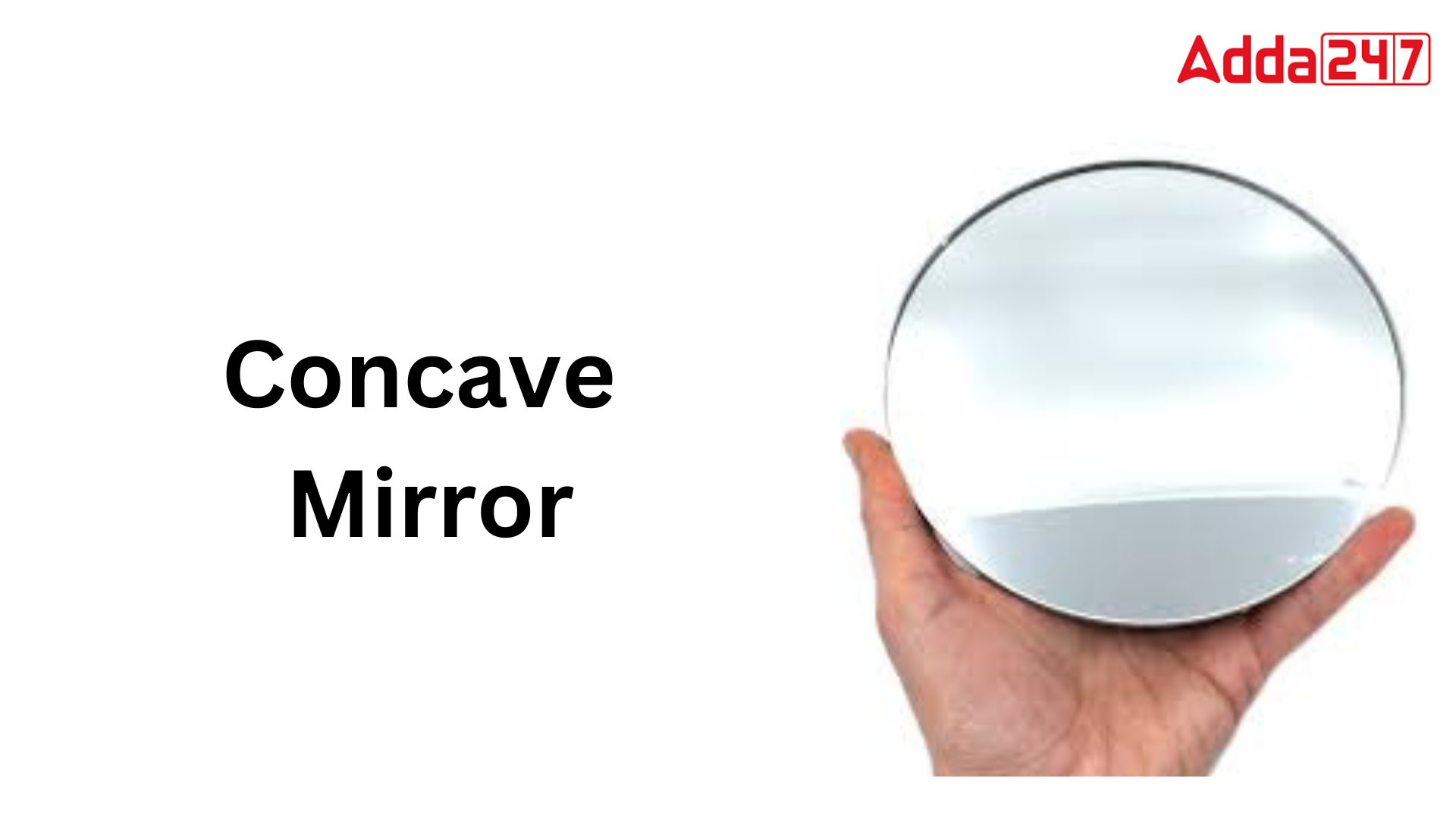Concave Mirror
A concave mirror is a type of curved mirror that curves inward, meaning its reflective surface is on the inside of the curve. This concave mirror can be thought of as a segment of a sphere, with the reflecting surface on the inner side of the sphere. Concave mirrors are commonly used in various applications due to their unique optical properties.
Concave Mirrors are of Two Types:
Converging Cancave Mirror: A concave mirror that bulges inward, towards its focal point, is referred to as a converging mirror. The focal point is the point where parallel rays of light that strike the mirror are focused after reflection. This focal point is also known as the mirror’s principal focus. Converging mirrors are commonly used in applications such as telescopes, makeup mirrors, and automobile headlights.
Diverging Cancave Mirror: In some cases, the reflective surface of a concave mirror can be relatively flat, or it can curve outward in a way that causes parallel rays of light to spread out. This type of concave mirror is known as a diverging mirror. Unlike converging mirrors, diverging mirrors do not have a real focal point. Instead, they appear to diverge the rays of light, which can create a virtual focus point when the rays are extended backward. Diverging mirrors are mainly used in optics experiments and demonstrations.
Concave Mirror Uses
Uses of Concave Mirror: A curved mirror is one that has a curved reflecting surface and is either bulged outward or recessed inward. The ones bulging outward are convex mirrors and recessed inward are concave mirrors. The surfaces of most curved mirrors are formed like a section of a sphere, however different shapes are occasionally utilised in optical equipment. Parabolic reflectors, which are used in optical equipment that require to picture of distant objects, are the most frequent non-spherical kind. Mirrors that distort the image are used for fun. They have convex and concave sections that cause images to be intentionally distorted. When the object is put at particular distances, they also offer extremely magnified or highly decreased images.
Read About: Autotropic Nutrition
Read about: Pisciculture
Concave Mirror Uses in Daily Life
Uses of the concave mirror in our day-to-day life are discussed below –
- Concave mirrors are used in headlights because the bulb of a headlamp or torch is placed at the focal point of the concave mirror. Light beams appear as parallel light rays in the Headlights and Torches after being reflected by a concave mirror. These reflected rays have the ability to travel vast distances and have a high intensity.
- Reflecting Telescopes: Concave mirrors are utilized in various reflecting telescopes in observational astronomy.
- Microscope: At the base of a microscope, a concave mirror serves as a condenser. The concave mirror illuminates only the specimen, leaving the surrounding region dark. The specimen is viewable with an eyepiece.
- Concave mirrors were utilized by dentists to have a better look inside the mouth.
- Concave mirrors are used in medical instruments such as the ophthalmoscope (which is used to examine the condition of the eyes),
- the Otoscope (which is used to examine the inside of the ears), and many others.
- ENT specialists frequently employ concave mirrors in simple diagnostic devices such as head mirrors.
- Shaving Mirrors with Concave Mirrors: Shaving is the most popular usage of concave mirrors due to their reflective and curved surface. When the concave mirror is held closer to the face during shaving, it creates an enlarged and erect image of the face.
Uses of Concave Mirror and Convex Mirror Class 10 with Applications
Concave Mirror
Light is reflected inward by concave mirrors, resulting in a single focal point. As a result, they’re usually utilised to concentrate light. Depending on the distance between the mirror and the object, a concave mirror will produce different image types. Concave mirrors are known as converging mirrors because they catch the light as it falls on them and redirects the parallel incoming rays. The following are some of the most important and common applications of the concave mirror:
Shaving mirrors
Shaving is done most often with concave mirrors. This is due to their curved and shiny surface. The concave mirror creates an enlarged and erect image of the face when shaving. Shaving becomes safer when the mirror is held closer to the face.
Microscopes
A concave mirror is employed in the base of a microscope. After passing through the mirror, light from an external source is shone on the specimen. The concave mirror solely focuses light on the specimen in order to keep the surroundings dark. The mirror’s orientation can be altered by spinning it. An eyepiece is used to see the specimen.
Ophthalmoscope
Optical equipment such as the ophthalmoscope uses concave mirrors. A concave mirror with a hole in the centre is used as an ophthalmoscope. While a light beam is delivered into the pupil of the patient’s eye, the doctor focuses via the small hole from behind the concave mirror. This makes the retina visible and easier to examine by doctors.
Headlights
Concave mirrors are commonly employed as reflectors in automotive and motor vehicle headlights, torchlights, and other applications. The light source is positioned at the mirror’s focal point. Furthermore, after reflecting, the light rays travel a long distance as parallel high-intensity light beams.
Solar furnaces
The solar furnace uses large concave mirrors to focus sunlight and generate heat. They’re also used in solar ovens to collect a lot of solar energy in the concave mirror’s focus for heating, cooking, melting metals, and other things.
Other Uses
Satellite dishes, electronic microscopes, visual bomb detectors, and other devices use concave mirrors.
Convex Mirror
A virtual, reduced, and upright image is always visible in a convex mirror. The image grows larger as the thing moves closer to the mirror. The image shrinks in size and gets closer to the focus as the object moves away until it is reduced to a point in the focus when the object is at an infinite distance. They encompass a larger range of view than a regular plane mirror because everything seems smaller in the mirror.
Convex mirrors are excellent for glancing behind a driver’s automobile on the road, keeping an eye on a larger area for surveillance, and so on.
Uses of concave mirrors in astronomical telescopes
The reflecting surface of a concave mirror, also known as a converging mirror, bulges inwards, away from the incident light. A telescope is an instrument for viewing and observing faraway objects. The objective of an astronomical telescope is a concave mirror with a diameter of 5 meters or greater. Because it converges the light traveling on the surface of the mirror, the concave mirror is a converging mirror. As a converging mirror, it converges light from a distant object (infinity) to a point of focus. All telescope mirrors concentrate and focus the received light at the focus. Light is not converged by plane mirrors. As a result, concave mirrors are utilized in astronomical telescopes.









 NEET UG 2026 Registration: NTA releases ...
NEET UG 2026 Registration: NTA releases ...
 CUET UG 2026 Online Registration Started...
CUET UG 2026 Online Registration Started...
 CUET 2026 Free Batches Launched by CUET ...
CUET 2026 Free Batches Launched by CUET ...














